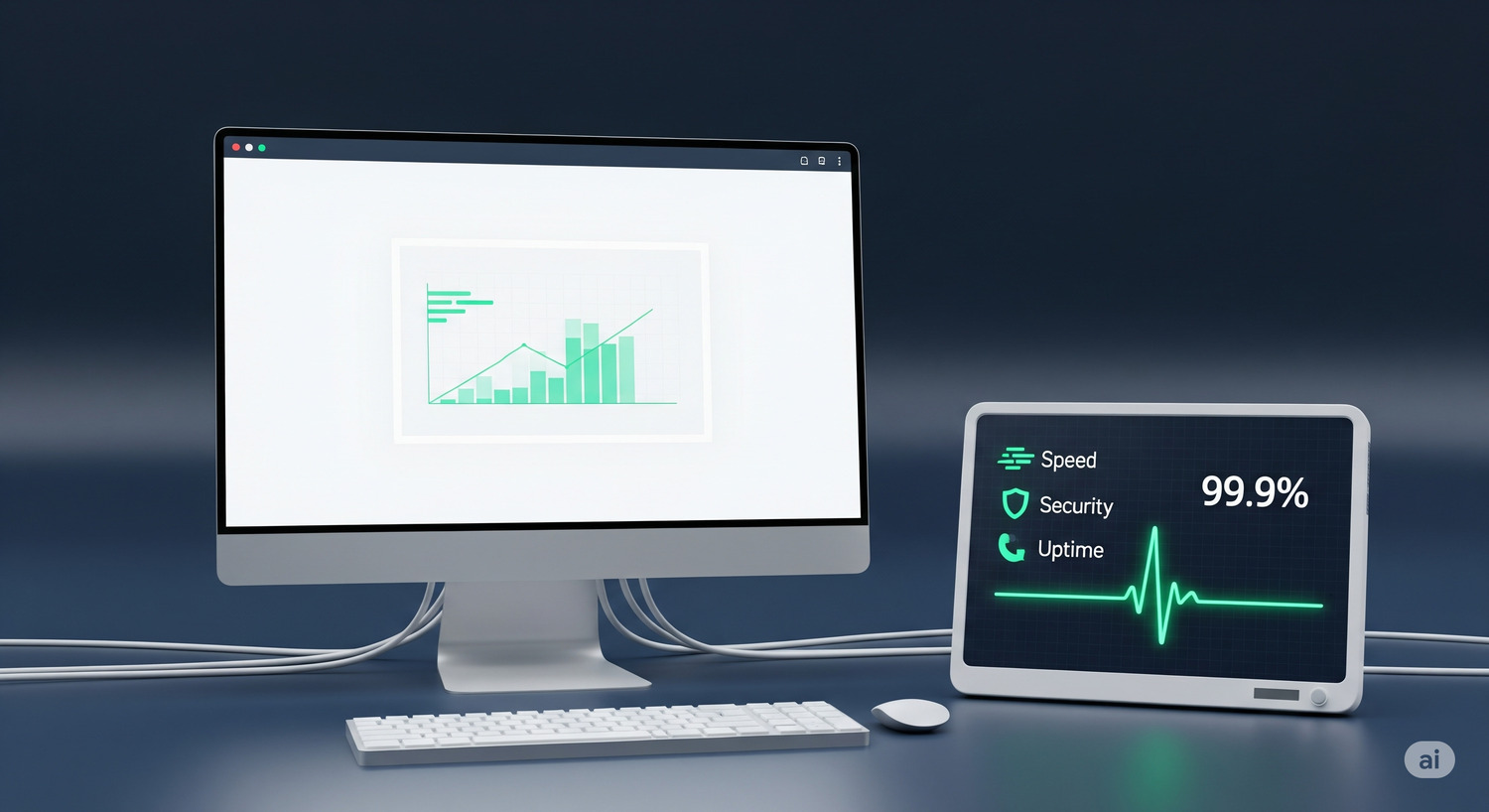Humans are wired to follow the crowd. When faced with uncertainty, we look to the actions and opinions of others to guide our own. This powerful psychological principle, defined by Dr. Robert Cialdini as “Social Proof,” is the bedrock of trust in the digital world.
If your website is a digital ghost town—devoid of reviews, testimonials, or any evidence of a happy customer base—you are fighting against fundamental human nature. You are an unproven entity asking for a visitor’s most valuable assets: their trust and their money.
As a website strategist, I see this all the time: businesses with excellent products fail because their websites offer no proof. They tell visitors they’re great, but they don’t show them that anyone else agrees. This isn’t just a missed opportunity; it’s a fatal flaw.
The Credibility Gap: The High Cost of Being Unproven
Operating without social proof creates a “credibility gap” that makes your brand feel risky and untrustworthy. The consequences are immediate and severe.
- It Annihilates Trust: A staggering 95% of consumers read reviews before making a purchase. When visitors land on your site and find no evidence that others have had a positive experience, their internal alarm bells ring. This lack of proof contributes directly to the feeling that a site is unprofessional or untrustworthy.
- It Creates Decision Paralysis: Without the validation of others, potential customers become hesitant. Social proof acts as a shortcut for decision-making. By removing it, you force the user to take a bigger perceived risk, which often leads to them taking no action at all.
- It Kills Your Conversion Rate: The impact on your bottom line is direct. Studies have shown that simply displaying online reviews can increase conversion rates by as much as 270%. Conversely, a lack of them means you are leaving a massive amount of revenue on the table. In fact, a bad user experience, often caused by this lack of trust, is responsible for up to 35% of missed sales.
The Trust-Builder’s Toolkit: A Blueprint for Social Proof
Building trust is not a passive activity. It requires a strategic and proactive approach to collecting and displaying different forms of social proof.
- The Voice of the Customer (Reviews & Testimonials) This is the most powerful and direct form of social proof.
- Action Plan: Actively request reviews from satisfied customers via email follow-ups. Make it easy for them. Instead of a generic “Testimonials” page, sprinkle your best quotes—complete with names, photos, and company/job titles for added authenticity—on your homepage, product pages, and next to contact forms. The Hotel Institute Montreux, for example, increased form submissions by 50% just by placing a single testimonial above their form.
- The Success Story (Case Studies) For B2B or high-value services, case studies are essential. They provide an in-depth narrative of how you solve a specific problem.
- Action Plan: Create detailed case studies that outline the client’s challenge, your solution, and the measurable results (e.g., “Increased revenue by 40%,” “Reduced costs by 25%”). According to research, 82% of marketers use case studies because they are incredibly effective at building trust with buying committees.
- The Wisdom of the Crowd (Data & Numbers) Show, don’t just tell. Use real-time data to demonstrate popularity and create a sense of momentum.
- Action Plan: Display metrics like “Join 50,000+ subscribers,” “Trusted by over 2,000 businesses,” or show recent sales notifications. This implies that choosing you is a safe, popular decision.
- The Stamp of Authority (Logos, Badges & Certifications) Leverage the credibility of others to enhance your own.
- Action Plan: If you have well-known clients, display their logos (with permission). Add trust badges like security seals (McAfee, Norton) to your checkout page. Showcase any industry awards or certifications you’ve earned. These are instant visual shortcuts to credibility.
The Future of Trust: AI and Hyper-Personalized Proof
In 2025 and beyond, the application of social proof is becoming even more sophisticated. AI tools can now analyze customer reviews to identify key themes and dynamically display the most relevant testimonials to different website visitors. Imagine a user interested in a specific product feature seeing a testimonial from another customer who praises that exact feature. This hyper-personalization makes social proof even more potent.
However, as AI-generated content becomes more prevalent, the value of authentic, human proof—like genuine video testimonials—will skyrocket. It will become the ultimate differentiator in a sea of digital noise.
Stop Telling, Start Showing
Your website shouldn’t just tell visitors you’re great; it must show them that others already think so. Social proof is the bridge that turns a skeptical visitor into a confident customer. Without it, your brand is just an unproven claim, and in the crowded digital marketplace, unproven claims are instantly ignored.













